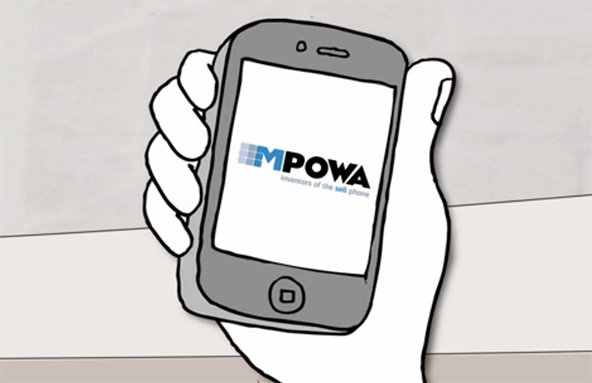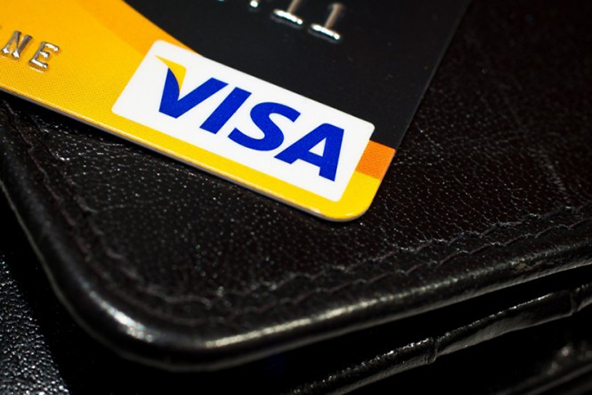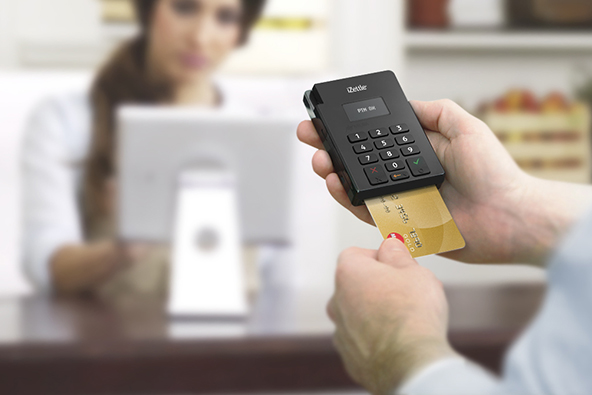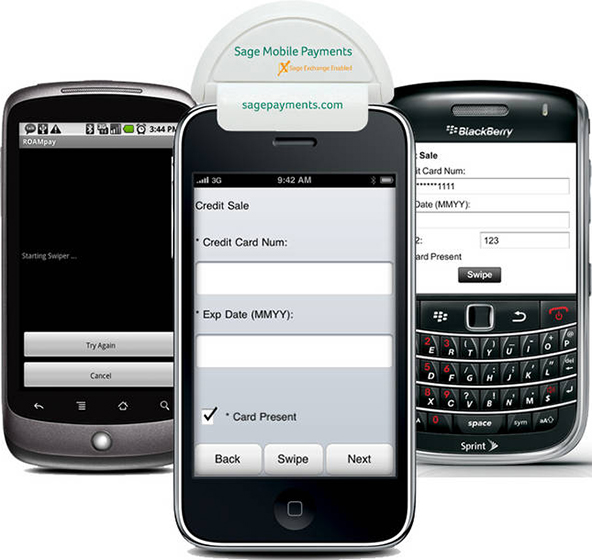Yet another Square Look-Alike Enters the U.S., Aims Higher

Did we need yet another Square look-alike? After all, apart from the original, we already have Intuit GoPayment, PayPal Here and a multitude of less well-known companies, all doing their best to enable every American to accept credit card payments through his or her smart phone. One could reasonably argue that the market is quite saturated.
Well, that’s not how mPowa — a U.K.-based start-up which has just launched in the U.S. — sees it. On the outside, mPowa’s service does look very Square-like. Users get a card reader that plugs into their smart phones and they are ready to go. Yes, mPowa supports BlackBerry and Windows, but that’s a relatively insignificant upgrade and yes, mPowa supports EMV-based, as well as mag-stripe-based cards, but there are still virtually no EMV cards in the U.S. So where is the competitive advantage? Well, for a change, this time there actually is one. The British start-up allows its service to be used as an addition to, not necessarily a replacement of, its users’ existing credit card processing services. None of its competitors does that and I think mPowa may be on to something.
mPowa Basics
Again, the way mPowa works is fairly indistinguishable from Square and PayPal Here, so there is not much to be said about the user experience side of the service. If you know how to use Square, you will know what to do with mPowa.
Where it does get interesting, however, is the start-up’s pricing model. There are two different rates: one for merchants, which would merely link mPowa to their existing credit card processing service and another for those, which would use mPowa as a stand-alone platform. Quite apart from getting interesting, this is where it also gets confusing. Here is, for example, what TechCrunch’s Ingrid Lunden has to say about mPowa’s pricing model:
In all cases, mPowa’s commission is a flat 0.25 percent fee. (Square’s is 2.75% per swipe, with manual payments at 3.5% plus a 15-cent fee.)
Let’s give Lunden the benefit of the doubt and assume that, although she hasn’t explicitly stated it, she is only talking about the pricing model used when mPowa is employed as an addition to an existing credit card processing arrangement. If that is the case, what Lunden isn’t telling us is that the 0.25-percent fee (with a minimum charge of $0.40 or £0.25 or €0.30) is applied on top of whatever the merchant is already charged by its processor. And that is not an insignificant charge. If a credit card payment accepted through an old-fashioned point-of-sale (POS) terminal costs you 1.65 percent plus $0.25, the same transaction, but accepted through a linked mPowa device, would cost you 1.90 percent plus $0.25. Then you can multiply that by whatever your daily or monthly volume may be.
mPowa’s Competitive Advantage
So mPowa’s strategy is to attract merchants, which otherwise would not have contemplated such a service, by offering them a non-exclusive agreement. In other words, the merchant can keep using its existing POS equipment for all transactions at the regular checkout, but it can start using mPowa to accept payments elsewhere.
But why would a merchant not contemplate a Square-like service? Well, unless it is processing very small-ticket transactions (e.g. coffee shops), a retailer would find Square’s pricing to be just too high, especially for debit cards, because Square’s transaction rates are the same for credit and debit cards. We’ve done the cost comparison several times before to illustrate the difference, for example here. The bottom line is that the merchants spent so much money to get the debit fees lowered that it is inconceivable that they would now just let Square collect the windfall.
mPowa clearly hopes that its 0.25-percent surcharge will prove to be more palatable to at least some merchants, because it would still let them keep the bulk of the hard-won debit savings. In effect, it is a convenience charge and the question that remains to be answered is whether or not the merchants would perceive such a convenience to be worth 0.25 percent of the transaction amount.
The Takeaway
It’s really difficult to predict how successful mPowa’s strategy would be. Lunden tells us that mPowa has already signed up some large corporate customers in the U.K. and is in “late-stage discussions” with large businesses in the U.S. Yet, I have to say that I would be very, very surprised if a large, or even mid-sized U.S. retailer, signed up a deal on the terms advertised on mPowa’s website. In fact, I think it is inconceivable that this would happen. See, the big retailers accept cards at no more than a couple of basis points above interchange. Do you think that they would agree to pay a quarter of a percentage to mPowa? It won’t happen.
That being said, there is certainly a niche of retailers that just need to be able to accept payments at various locations and they may well find mPowa’s pricing structure more attractive than Square’s. In fact, all merchants processing higher-ticket transactions would be better served by the British processor. Whether mPowa will be able to convince them that this is indeed the case is another matter altogether.
Image credit: Vimeo / mPowa.



I don’t mind the tag “clone”. US providers have had the headstart but they have yet to penetrate the European market and now European upstarts like mPowa (www.mpowa.com) aren’t far behind them. The European market needs and demands differ from that of the US, so it’s going to be really, really interesting how things are going to be in the mobile payment scene months from now.